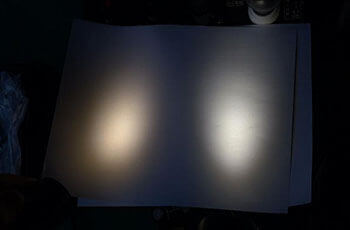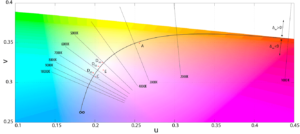Last week, we have post a questions on Linkedin. ” Opps! Both 3000K show different color. ” ,thanks everyone comment about that. If you have further interest can click that get more professional answer.We see more and more light sources that supposed to be exactly the same color temperature, but actually appear different to human eye. So why the same color temperatures look different?
When people talk about color temperature, they are usually talking about correlated color temperature instead (CCT). There is a difference between these two.
Color temperature (CT)
Color temperature (CT) defines what is the exact spot of the light source is on the planckian locus line. This line in pictured in the below image as the black line in the middle. So if there are two light sources, that have a color temperature of 4000K, they both look exactly the same as they both are on the same spot.
Correlated color temperature (CCT)
Correlated color temperature is used when the light source is off from the planckian locus. If CT defines the exact point on locus, then CCT defines the perpendicular line which runs directly through that exact point. So if a light source is off from the locus, then CCT is the CT point which is closest on the locust. So for example if a light source has a CCT of 4000K, that means that it can be on any point on the line that runs through the 4000K point on the locus. You can see these lines on the image. Typically a light sources color temperature is announced as CCT. So if it is said that two light sources have a CCT of 4000K, this means that they are on the same line that runs through the 4000K spot, but may, in fact, look totally different.
Chromaticity coordinates
Usually, light source’s chromaticity is defined in diagram as chromaticity coordinates. In this diagram, you can’t determine that CCT is the shortest distance to the locus. You can see the chromaticity diagram in the image below.
So when you have three luminaires which have the same 4000K CCT, you can have three totally different colored lights.
If the light has a greenish white light, that will mean that the chromaticity coordinate is above the planckian locus.
If the light has a purple tone, then chromaticity coordinates are below the locus.
If the light is normal white light, then the chromaticity coordinates are on the locus or at least very close to it.
So please remember that staring at the CCT doesn’t always tell you everything. If you use two different light sources with the same CCT, you should always check the coordinates and see if these two are actually the same color.


